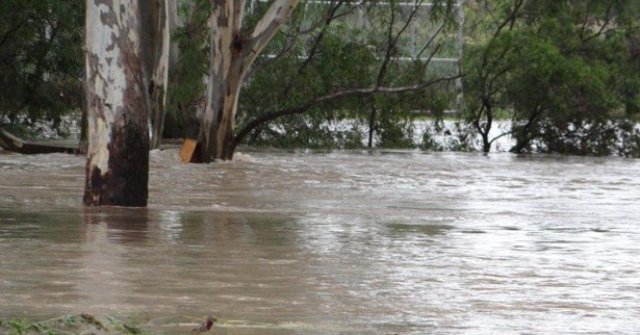
I remember Grong Grong; my aunt and uncle had a store there in the 1960s. Floods are not common in this stretch of the NSW Riverina, but they happen in odd years when the Murrumbidgee River further south rises and breaks its banks.
For runoff from the often-parched paddocks around Grong Grong to cause flooding is almost unheard of.
Or so it used to be. Then on March 4 a total of 194 millimetres of rain fell on Grong Grong. The preceding days had rainfall of 175 millimetres, to a total of almost 370 millimetres. Average yearly rainfall in the town, for comparison, is just 455 millimetres.
Something, the locals are no doubt saying, is happening to the weather. How can it be that almost a year’s rain gets dumped on you in a single week? National news reports, too, spoke of the deluge across south-eastern Australia as “unprecedented”. It may well have been, at least since the beginning of white settlement.
Might it have something to do with climate change?
For Cairns’ weather to slip south thousands of kilometres, and make it inland to Grong Grong, has always been unlikely. But such things have happened in the past, at intervals of perhaps several centuries. They didn’t need climate change in order to occur then.
But in a sense, all weather these days has to do with climate change. Such basic factors in the equations as global average air and sea temperatures are higher now than when my uncle used to gripe about drought closing his customers’ wallets.
Loading the dice
What climate change does is “load the dice” in favour of more extreme weather.
Freak weather events that might have been observed once in recorded history may now happen, on average, as often as every few decades.
The NSW floods of early March had their key origins in the Indian Ocean, broad areas of which were then, relatively, a steaming stew with temperatures more than 2°C above normal.
How might this be related to climate change? Of the extra heat trapped by Earth’s growing blanket of greenhouse gases, about 90% goes to warm the oceans. Dr Kevin Trenberth of the US National Center for Atmospheric Research says global average sea surface temperatures have risen by about 0.5°C since the 1970s.
Of course, pools of warm water occurred in the world’s oceans before this. But human releases of greenhouse gases are making these pools larger, warmer and more numerous.
Air temperatures over the oceans are closely linked to sea surface temperatures. When air temperatures rise, the water-holding capacity of the atmosphere increases exponentially.
Trenberth said in June last year: “Over the ocean ... observations confirm that the amount of water vapour in the atmosphere has increased by about 4% ... since about the 1970s”.
From late February this year, a broad stream of warm, moist tropical air poured from the Indian Ocean across inland Australia. Such things happen repeatedly most summers. But how warm? And how moist? This time, a note of astonishment crept into the staid language of the forecasters as they predicted downpours of more than 300 millimetres.
Global surface air temperatures are now about 0.55°C higher than they were in 1975, and 0.8°C above pre-industrial levels.
Scientists say that if human-caused greenhouse emissions keep rising at “business as usual” rates, average air temperatures by 2100 are likely to reach about 5°C above the pre-industrial figure.
More — and much bigger — deluges would seem to be on the way.
Exaggeration?
But might such predictions be exaggerated, the reflections of imperfect computer models?
An exhaustive study published early last year in the journal Nature suggests the opposite. It said: “Human-induced increases in greenhouse gases have contributed to the observed intensification of heavy precipitation events found over approximately two-thirds of data-covered parts of Northern Hemisphere land areas …
“The impacts of future changes in extreme precipitation may be underestimated because models seem to underestimate the observed increase in heavy precipitation with warming.”
Paradoxically, the form of extreme weather that south-eastern Australia is likely to see most of in coming decades is droughts rather than floods. Global warming, it is becoming clear, is having the effect of shifting rain-bearing winter westerlies further south. Meanwhile, evaporation from land surfaces is expected to increase as temperatures rise.
In August last year, the Cosmos site reported a study by CSIRO and University of Melbourne scientists that analysed the predictions for Australia’s climate made by 23 currently available climate models.
The study concluded that if average global temperatures were to rise by 4°C or more, “the annual rainfall over southern Australia, particularly in winter and spring, would decrease by up to 50%.
“The combined decrease in rainfall with rising evaporation levels of between 5% and 20%, would lead to droughts occurring up to five times more often in the southern regions of Australia.”
For farm-dependent communities in the Murray-Darling Basin, that is not good news.

Comments
Anonymous replied on Permalink